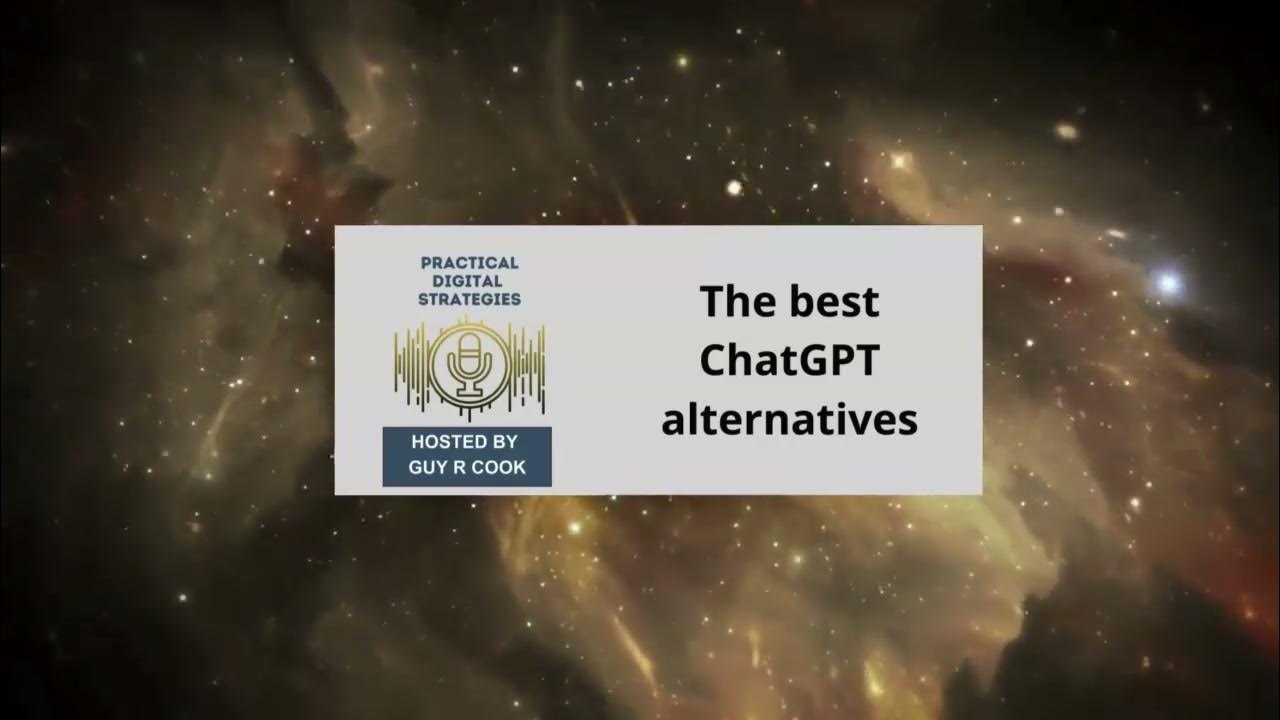ChatGPT spiegato da un avvocato "privacysta" (guida completa con prompt utili)
Summary
TLDRThe video script is an informative guide on utilizing artificial intelligence, specifically Chat GPT, as a study aid. It emphasizes the differences between AI and search engines, the importance of understanding AI's learning capabilities, and the need for human creativity. The script provides practical tips on crafting effective prompts, using the CID framework, and setting up study plans. It also addresses privacy concerns, offering solutions for managing shared links and disabling chat history to protect personal data. The video encourages users to explore AI's potential in enhancing their learning experience while maintaining privacy and security.
Takeaways
- 📚 The video is a follow-up to a previous one on artificial intelligence (AI) and its application in understanding complex legislative texts.
- 🙏 The creator expresses gratitude for the audience's engagement and confidence in their content.
- 📈 The video aims to provide an overview of chatbots, specifically focusing on ChatGPT, and how it can be used as a study tool.
- 🌐 The creator discusses the evolution of AI and its various applications, emphasizing the potential of chatbots in everyday life.
- 🔍 The difference between AI chatbots and search engines is highlighted, explaining that AI can perform tasks beyond simple searches.
- 🤖 ChatGPT is described as a large language model (LLM) that generates outputs based on inputs, without truly understanding the content.
- 🚫 The video clarifies that AI is not a human and lacks human creativity, thus it should be seen as a tool to enhance human capabilities.
- 📝 The importance of understanding the concepts of 'prompt' and 'output' is stressed for effective use of AI chatbots.
- 🎯 Tips for effective 'prompt design' are provided, such as avoiding zero-shot prompting and using emotions to improve responses.
- 📊 The video outlines the technical limitations of ChatGPT, like the 500-word or 4000-character output limit.
- 🔒 Privacy considerations when using AI chatbots are discussed, including the importance of anonymizing personal data.
Q & A
What is the main topic of the video?
-The main topic of the video is an overview and guide on using Chat GPT for studying and understanding complex legislative texts.
What are some of the key features of Chat GPT that the speaker highlights?
-The key features highlighted include its ability to generate precise and 'hero' content, its simple and structured user experience resembling a real chat, and its free availability, at least for version 3.5.
How does the speaker describe the difference between Chat GPT and a search engine like Google?
-The speaker describes Chat GPT as a tool that goes beyond simple search by generating elaborate and complex outputs based on the input provided, as opposed to a search engine which primarily retrieves and lists information based on keywords.
What is the significance of the Large Language Model (LLM) in the context of Chat GPT?
-The Large Language Model (LLM) refers to the AI's ability to generate responses based on pre-trained data from various sources like texts, books, and research. It is the foundation of the generative intelligence that powers Chat GPT.
How does the speaker address the concern of privacy when using Chat GPT?
-The speaker emphasizes the importance of anonymizing any personal data before using Chat GPT, especially when dealing with version 4 which allows document uploads. They also mention the possibility of managing shared links and disabling chat history for enhanced privacy.
What is the role of 'prompting' in interacting with Chat GPT?
-Prompting is the act of providing input to Chat GPT to generate a desired output. The speaker stresses the importance of crafting effective prompts that include context, clear instructions, and emotional cues to get the most accurate and helpful responses.
How does the speaker suggest using Chat GPT for studying?
-The speaker suggests using Chat GPT for summarizing complex texts, generating study materials, simulating exams, and refining prompts based on the user's understanding and needs.
What is the significance of the CID framework mentioned by the speaker?
-The CID framework stands for Context, Instructions, Details, and Input. It is a guideline for creating effective prompts for Chat GPT, ensuring that the AI understands the context, the task at hand, and any specific details or inputs needed to generate a useful output.
What is the role of the RLE (Role-Playing and Leading Examples) prompting technique in interacting with Chat GPT?
-The RLE prompting technique involves asking Chat GPT to behave as if it were a specific person or object, which can help in generating more targeted and relevant outputs based on the role or scenario provided.
How does the speaker propose to use Chat GPT for exam preparation?
-The speaker proposes using Chat GPT to simulate exam conditions, generate practice questions, provide feedback, and even create a study schedule, all tailored to the user's specific needs and knowledge level.
What are the additional resources and communities mentioned by the speaker for further learning and engagement?
-The speaker mentions their community called 'Gladiatori Digitali', where people passionate about technology and innovation can engage and learn together. They also refer to resources like the privacy dashboard and the CID framework for effective prompting.
Outlines

此内容仅限付费用户访问。 请升级后访问。
立即升级Mindmap

此内容仅限付费用户访问。 请升级后访问。
立即升级Keywords

此内容仅限付费用户访问。 请升级后访问。
立即升级Highlights

此内容仅限付费用户访问。 请升级后访问。
立即升级Transcripts

此内容仅限付费用户访问。 请升级后访问。
立即升级浏览更多相关视频

Chat GPT और UPSC 2.0 #viral #chatgpt #upsc #ai #artificialintelligence #news #upsc #trending

ADDIO EXCEL? Analizzare i dati è più semplice con ChatGPT! 📊✅ [Code Interpreter]

Summit Dan Levy Senior Lecturer Harvard University GEF Madrid 2024

ChatGPT? Ha troppi LIMITI… Ecco le ALTERNATIVE che preferisco!

50 Ways Teachers can use Chat GPT to Save Time

Using ChatGPT, here's the FREE list of alternatives
5.0 / 5 (0 votes)
